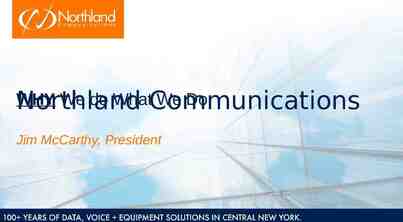Equity Incentive Programs: Strategies for Employee Retention and
15 Slides954.17 KB
Equity Incentive Programs: Strategies for Employee Retention and Strategic Growth Dave Shafer Attorney, Business & Corporate Group PilieroMazza PLLC September 15, 2020
Dave Shafer Dave Shafer Business & Corporate Group PilieroMazza PLLC [email protected] 410.500.5551 Dave counsels clients on a broad range of business and finance matters, such as mergers and acquisitions, purchase and sale of private businesses, commercial financing, private offerings of debt and equity securities, venture capital and private equity transactions, and general governance issues. He advises clients on all phases of their business life cycle, from formation and start-up through growth, operation, and sustainment to sale of the company—often counseling clients on matters related to customer and vendor contracts, securities and tax compliance, and employee incentive offerings. 2
About PilieroMazza 3
Overview and Agenda SDVOSB Regulatory Environment Potential Purposes of Incentive Programs Strategic Considerations Incentive Plans Available Synthetic Equity Options True Equity Options Implementation and Integration 4
SDVOSB Regulatory Environment Unconditional and Direct Ownership At least 51% of the SDVOSB must be unconditionally and directly owned by one or more SDVs Financial Benefits Requirement SBA’s rules require that the veteran receives the financial benefits commensurate with his or her ownership 5
Employee Incentives under SBA Limits Attracting and retaining talent is crucial to company growth In some ways, SDVOSBs are at a disadvantage in the talent market Certain models for employee incentives are limited or not available: Bonuses/Compensation is limited by the general rule that the veteran must remain the highest compensated individual Equity Incentive Plans (e.g. stock option plans, profits interest plans, or restricted stock/unit plans) are limited by the fact that the veteran cannot be diluted below 51% 6
Purposes of Incentive Plans 1. Recruit: All forms of incentive plans are helpful in recruiting employees 2. Retain: Incentive plans can reward employees who remain at the company 3. Motivate: Incentive plans can reward employees for a company’s appreciating value and can align their interests with the shareholders 7
Strategic Considerations – Determining the Appropriate Starting Point Not one size fits all Relevant and useful no matter the stage of a company’s life cycle Evaluate company culture, talent pool and current employee retention and motivation programs Alignment of the following: Company and shareholder goals Employee capabilities and commitment Tasks and objectives, and confidence it can be done 8
Strategic Considerations - Fundamental Questions Regarding Sharing in the Upside Does the company want to share real equity? If so, how much? Set a “pool.” Which employees will be eligible to participate (executive officers versus “rank and file”)? Will consultants be included as well? What are you rewarding for? Value since inception, future growth, company wide, division ? How and when will payment occur? Will the company have liquidity to make payment? How is the award earned and will it be subject to forfeiture? Under what circumstances? What if a vested participant terminates employment? 9
Equity Plans vs. Synthetic Equity Plans Equity Plans Holder receives equity in the company (triggers fiduciary duties to minority owners and voting, dividend, etc. rights) Typically, some capital investment is required Benefit typically not tied to specific date/event in the future Monetizing event often taxed at capital gains tax rates Securities laws compliance (federal and state) Synthetic Equity Plans Holder does not receive equity in the company; instead plan compensation is tied to company performance Typically, no capital investment requirement Benefit typically tied to specific date/event in the future Monetizing event taxed at ordinary income tax rates Typically, no trigger for compliance with securities laws (if awards are in cash only) 10
Best Employee Incentive Models for SDVOSBs Cash bonus plans are still an important component Good to incentivize short-term goals (annual revenues goals; division growth; recruiting goals) Broad-Based Qualified Plans Builds ownership culture throughout the company Employee Stock Ownership Plans (ESOP); Retirement Plans (401k) Equity Plans Sharing equity with key employees Synthetic Equity Plans (Benefit Value linked to Equity Value) Good to incentivize long-term business goals Provide compensation that is linked to appreciation in the company’s equity value without providing actual equity Phantom Equity Plans Stock Appreciation Rights Plans 11
Phantom Equity Plans Phantom Equity Plans are unfunded, unsecured promises to pay the value of shares of stock, in cash, in the future. Characteristics: Holder receives cash, and the amount is tied to the change in value of stock from the grant date through the vesting date. Employee does not make monetary contribution. Payment occurs on events designated in the plan (e.g., change in control, death, disability). Company must have liquidity to pay benefits in cash. Considerations: The value of the benefit is tied to company performance. The company can designate which events trigger payment events and can provide for forfeiture if the holder leaves the company. Cash benefit taxed at ordinary income rates. 12
Investment Considerations for SDVOSBs Can bring investors in for minority ownership stakes, but veteran must always retain 51% fully diluted ownership Investors must understand limitations on control rights; they need to be comfortable with just the 5 voting control rights. All other decisions must be left to the veteran. Board rights Investors can take a board seat, but the veteran must control board votes Board observer rights are a good way to allow participation without control Convertible Note investments can avoid dilution issues if structured such that conversion is not a sure thing and is ultimately only at the veteran’s option 13
Final Considerations Recruit, Retain, Motivate- how does your plan accomplish these objectives? Do I want to have additional share/unit holders? Do I have the liquidity to fund the cash needs of my plan? What are your thoughts on repurchase rights? Are you keeping it simple so that the company and the recipients easily understand the plan? 14
Questions? Dave Shafer Business & Corporate Group PilieroMazza PLLC [email protected] 410.500.5551 Disclaimer Disclaimer This This communication communication does does not not provide provide legal legal advice, advice, nor nor does does it it create create an an attorney-client attorney-client relationship relationship with with you you or or any any other other reader. reader. If If you you require require legal legal guidance guidance in in any any specific specific situation, situation, you you should should engage engage a a qualified qualified lawyer lawyer for for that that purpose. purpose. Prior Prior results results do do not not guarantee guarantee a a similar similar outcome. outcome. Attorney Attorney Advertising Advertising It It is is possible possible that that under under the the laws, laws, rules, rules, or or regulations regulations of of certain certain jurisdictions, jurisdictions, this this may may be be construed construed as as an an advertisement advertisement or or solicitation. solicitation. 2020 2020 PilieroMazza PilieroMazza PLLC PLLC All All rights rights reserved. reserved. 15




















